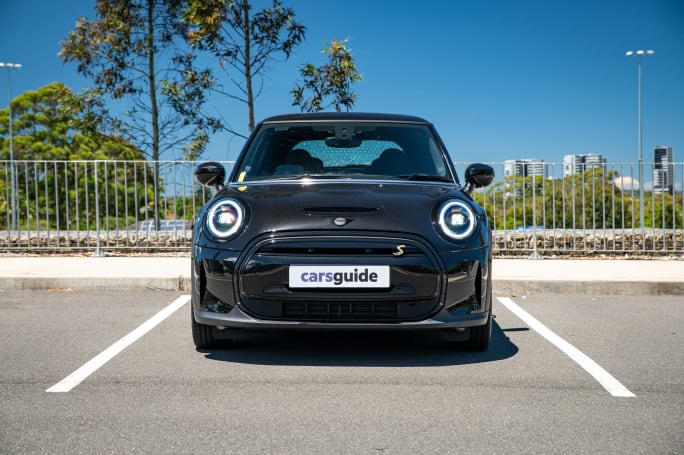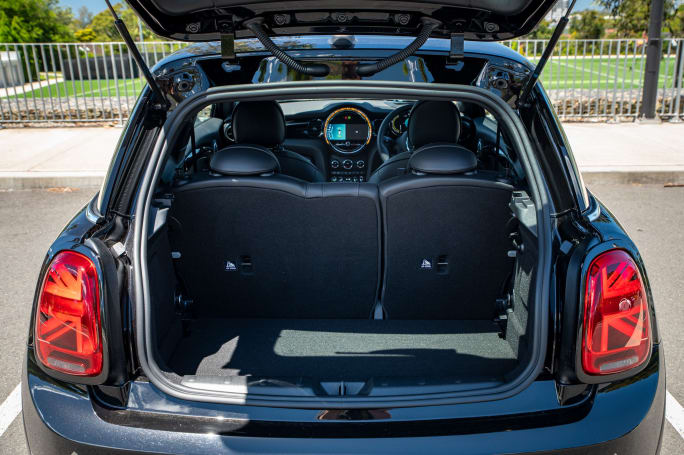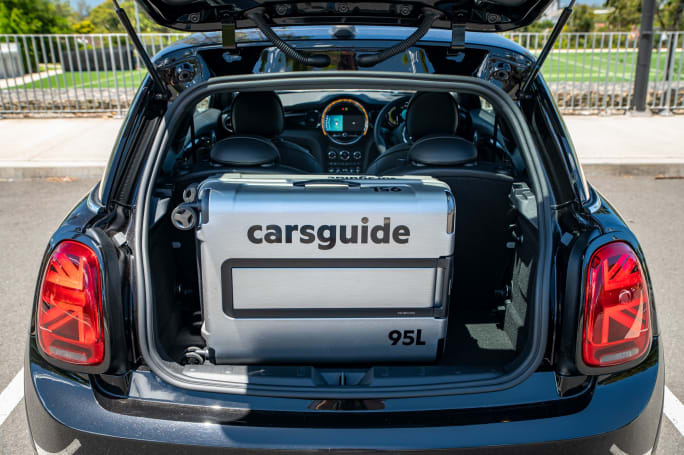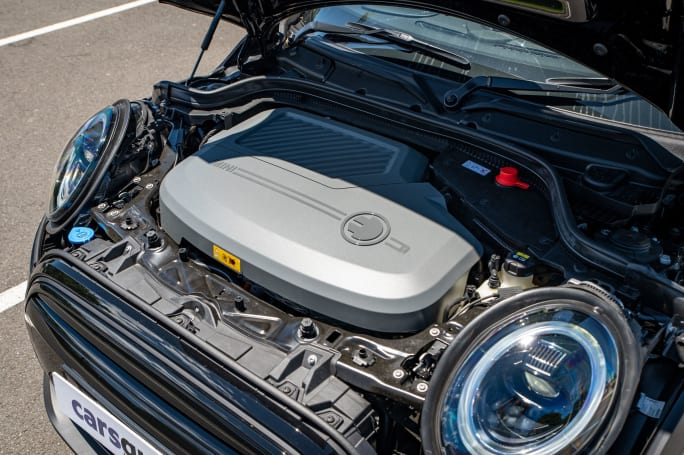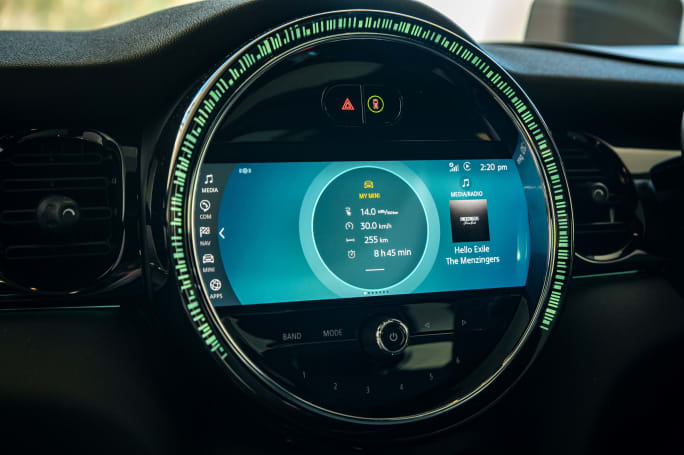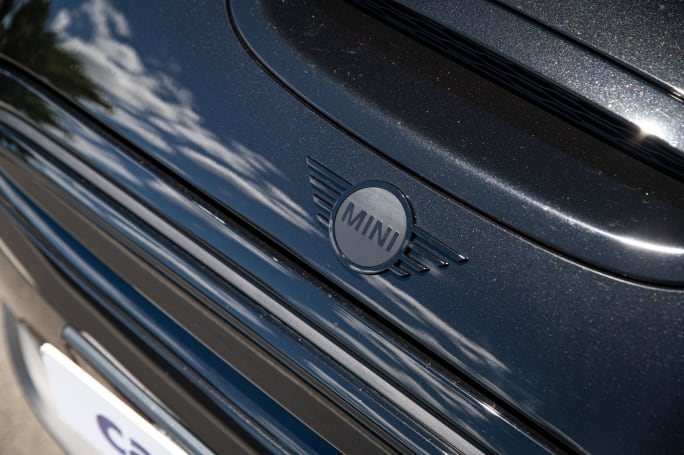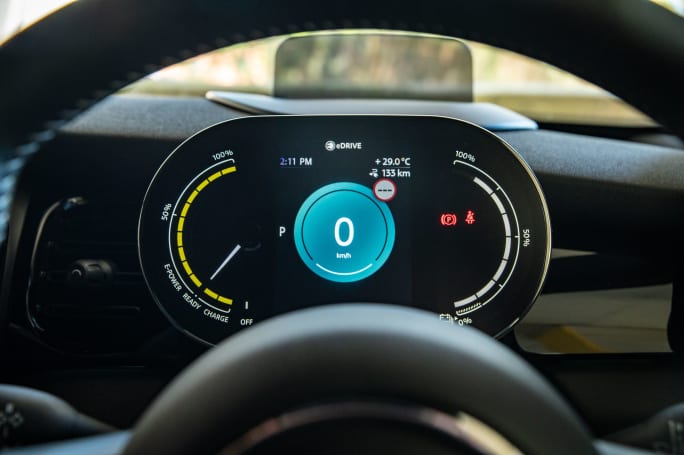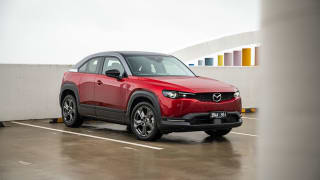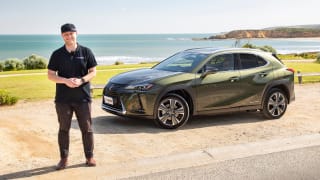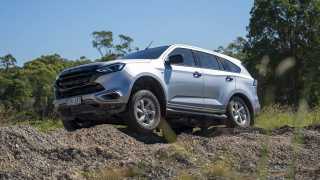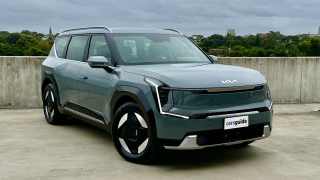The Mini Cooper SE costs from $55,650 before on-roads (MSRP) for the base Classic trim, and our car in the higher ‘Yours’ aesthetic trim package actually wears an even higher price-tag of $63,475. Topping off the range is the limited-edition Resolute trim, which wears a starting price of $63,825 - it is only available in the ‘Rebel Green’ colour scheme with an off-white roof.
There’s no getting around the fact that’s a lot of cash for a three-door hatch. Even hot hatches in this size-category are significantly cheaper.
But in the EV space it doesn’t look so bad when lined up against the Mazda MX-30, which has a similar range, or this car’s outgoing BMW i3 cousin which cost a whopping $71,900 before it was discontinued in 2021.
However, range is a weakness. With a 233km range, the Mini is essentially confined to city limits, while for a significantly lower MSRP you can be hopping in a trendy Tesla Model 3 or stylish Polestar 2 which both offer north of 450km of driving range – enough for most inter-city trips.
I suspect the intention is for this Mini to be best kept as a second car for darting around town in a fuel-free manner and not as a primary mode of transport. Even so, the pricing makes it a tall order for a niche customer.
Regardless, the standard equipment is decent, as the now ageing third-generation Mini has been significantly augmented with better tech over time.
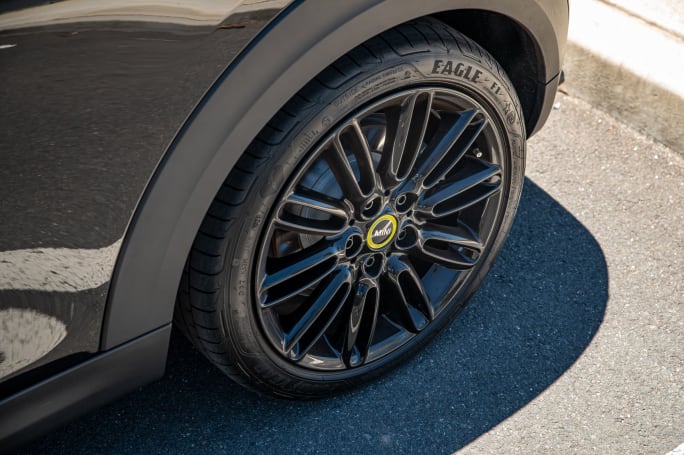
This version comes with 17-inch ‘Tentacle’ alloy wheels (I like these a LOT more than the dorky standard ‘Power’ wheels on the electric version), leather ‘lounge’ seats with a leather steering wheel, an 8.8-inch widescreen multimedia touchscreen with wireless Apple CarPlay (but no Android Auto), a wireless phone charger in the fold-down armrest, digital radio and built-in sat-nav, heated front seats, dual-zone climate control (feels overkill for such a small cabin), and a heat pump (helps regulate the battery temp and support the car’s electrical features).
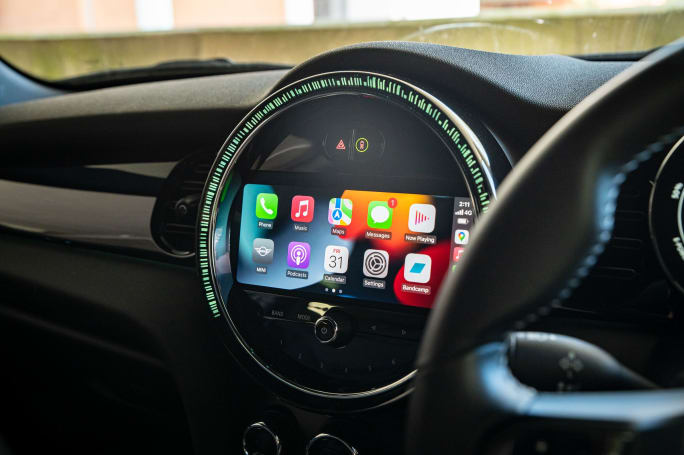
There’s also a head-up display and a quaint 5.5-inch digital instrument cluster to support the driver. All Minis get LED headlights and tail-lights, complete with the Union Jack pattern, which is either a fun attention-to-detail piece or dangerously close to Austin Powers levels of self-parody, depending on who you ask.
What do you miss out on? Not much. The seats are manual adjust which is rare at such a tall price, but otherwise there’s a decent active safety suite, and Mini even throws in a Type 2 to Type 2 public charging cable as well as the standard wall socket version.
There are more good things to say on the topic of charging, too, but we’ll leave that for the relevant part of this review.




